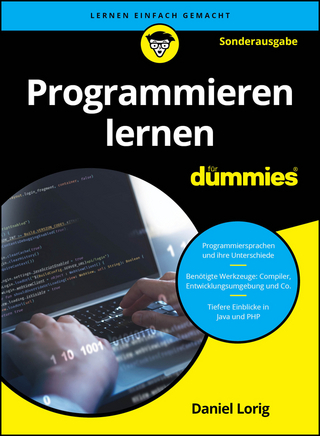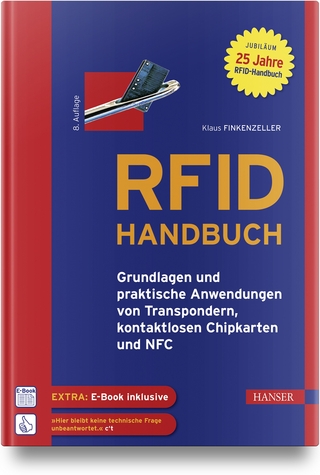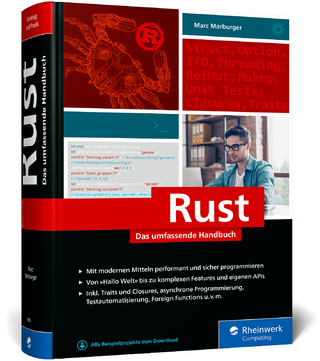
Systems Engineering Using SDL-92
North-Holland (Verlag)
978-0-444-89872-2 (ISBN)
- Titel ist leider vergriffen;
keine Neuauflage - Artikel merken
CCITT (now ITU-T) Specification and Description Language (SDL) and systems engineering (formal and informal) in SDL are considered in this publication. The latest version of the language, SDL-92 [ITU Z.100 SDL-92] is introduced. The book has been written for existing and potential users of SDL - technologists involved in the specification and engineering of systems. It offers easier learning, through examples and application, than the Z.100 Recommendation of March 1993, which gives precise technical definitions and concepts. The book has sufficient coverage of the language so that for normal use it should not be necessary to consult Z.100. For this reason, the grammars, both textual and graphical, are included, and the index makes it possible to find text on most of the language mechanisms.Chapter 1 provides an overview of specification and design of telecommunication systems. It considers the usage and scope of SDL. Chapter 2 gives an overview of the language, with an introduction of the major language elements. Chapter 3 focuses on the specification of behaviour and the information interchange between processes. Chapter 4 covers the structuring of systems in terms of instances, how these may be defined by types and how types may be organised in type/subtype hierarchies by inheritance. Parameterised types and packages of type definitions are also covered. Chapter 5 presents the part of the language that provides data types, with emphasis placed on how to use predefined data types. Chapter 6 presents the use of SDL for system engineering, with a discussion of general systems engineering principles followed by an introduction to methodologies which use SDL. The use of other languages in combination with SDL, documentation issues, naming and other lexical rules, errors and language support are considered, since they are more relevant to the use of language in engineering than when initially learning the language.
Acknowledgements. Introduction. Intended usage. Overview of the book. Conventions of notation used in the book. 1. Specification of Telecommunications Systems. When to use SDL. What to describe in SDL. Limitations. Availability of SDL. 2. Overview of SDL. Introduction. Processes and process types. Specifying properties of variables. Specifying behaviour: states and transitions. Procedure attributes. Grouping objects: blocks of processes. Specifying systems: set of blocks connected by channels. Specialisation by adding attributes, states and transitions. Specialisation by redefining virtual transitions. Specialisation by redefining virtual procedures. Specialisation of signals. Classifying blocks: block types and specialisation of these. From partial to complete behaviour: composition of services. Diagrams and scope/visibility rules. Organising sets of related types: packages of type definitions. Summary. 3. Behaviour. Extended finite state machines. Processes. Communication. Contents of a process. Lifetime. The basics of a process. Other state triggers. Other actions. Procedure. Additional communication schemes. Modelling time. Examples. 4. Structure. Introduction. Structuring of systems. Parameterised types. Specialisation of types. Structuring of specifications. 5. Data. Introduction. General data concepts. The SDL data model. Structure of a data type definition. Use of literals and operators. Generators. Using built-in features. Use of data. Defining operators. Examples. 6. System Engineering. Engineering of systems. SDL use in methodologies. Creating SDL (using SPECS methodology). Integrating SDL into a complete methodology. Lexical rules: use of characters. Informal text. Errors and undesirable specifications. Support for SDL. Building on experience. A. Combining SDL and ASN.1 Principles for combining SDL and ASN.1. Summaries. B. Example: Using Processes as Pointer Types. Overview. The system. The list user block. The list handling block. The list element handling block. C. Differences between SDL-88 and SDL-92. Cases where SDL-92 is not compatible with SDL-88. Extensions compared to SDL-88. D. Syntax Summary. PR summary. GR summary. Symbol summary. Connectivity of SDL symbols. Index.
| Erscheint lt. Verlag | 14.9.1994 |
|---|---|
| Zusatzinfo | index |
| Sprache | englisch |
| Themenwelt | Mathematik / Informatik ► Informatik ► Programmiersprachen / -werkzeuge |
| Mathematik / Informatik ► Informatik ► Theorie / Studium | |
| Technik ► Nachrichtentechnik | |
| ISBN-10 | 0-444-89872-7 / 0444898727 |
| ISBN-13 | 978-0-444-89872-2 / 9780444898722 |
| Zustand | Neuware |
| Informationen gemäß Produktsicherheitsverordnung (GPSR) | |
| Haben Sie eine Frage zum Produkt? |
aus dem Bereich


